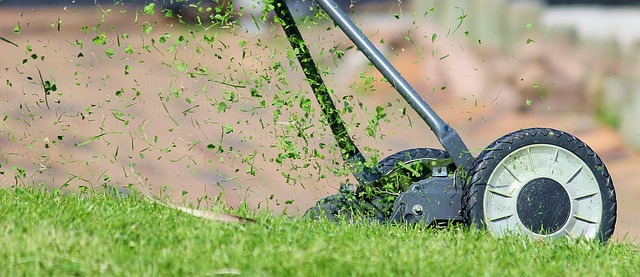The Ultimate Guide to Lawn Mowers: Choosing, Maintaining, and Sharpening
Lawn mowers are essential tools for maintaining a beautiful and well-manicured garden. Whether you're a new homeowner or looking to upgrade your current equipment, understanding the ins and outs of lawn mowers can help you make informed decisions and keep your lawn in top shape. This comprehensive guide will walk you through choosing the right lawn mower for your garden, properly maintaining your equipment, and safely sharpening the blades to ensure optimal performance.

How to Choose the Perfect Lawn Mower for Your Garden
Selecting the right lawn mower depends on several factors, including the size of your lawn, terrain, and personal preferences. When shopping for a lawn mower, consider the following:
-
Lawn size: For small lawns (up to 1/4 acre), a manual push mower or electric cordless mower may suffice. Medium-sized lawns (1/4 to 1/2 acre) typically require a self-propelled walk-behind mower. Large lawns (over 1/2 acre) may benefit from a riding mower or lawn tractor.
-
Terrain: If your lawn has slopes or uneven ground, opt for a self-propelled mower with large wheels for better traction. For flat lawns, a standard push mower should work well.
-
Power source: Choose between gas-powered, electric (corded or cordless), or manual push mowers. Gas mowers offer more power and mobility but require more maintenance. Electric mowers are quieter and eco-friendly but may have limited run time or range.
-
Features: Consider additional features like mulching capabilities, bagging options, adjustable cutting heights, and ergonomic handles for added comfort and convenience.
Essential Lawn Mower Maintenance Tips for Homeowners
Regular maintenance is crucial for keeping your lawn mower in top condition and extending its lifespan. Follow these tips to ensure your mower performs optimally:
-
Read the manual: Familiarize yourself with your mower’s specific maintenance requirements and recommended service intervals.
-
Clean after each use: Remove grass clippings and debris from the deck, wheels, and undercarriage to prevent rust and corrosion.
-
Check oil levels: For gas-powered mowers, check and change the oil regularly according to the manufacturer’s recommendations.
-
Inspect air filter: Clean or replace the air filter as needed to maintain engine efficiency.
-
Sharpen blades: Keep the blades sharp for a clean cut and healthier lawn. We’ll cover this in more detail in the next section.
-
Tighten bolts and screws: Regularly check and tighten any loose hardware to ensure safe operation.
-
Store properly: Keep your mower in a dry, covered area when not in use to protect it from the elements.
-
Winterize: Prepare your mower for long-term storage by draining fuel, removing the battery (if applicable), and cleaning thoroughly.
How to Sharpen Lawn Mower Blades Safely and Effectively
Sharp blades are essential for a clean cut and a healthy lawn. Follow these steps to sharpen your lawn mower blades safely:
-
Disconnect power: For gas mowers, remove the spark plug wire. For electric mowers, unplug or remove the battery.
-
Remove the blade: Consult your owner’s manual for specific instructions on removing the blade safely.
-
Clean the blade: Remove any grass clippings or debris from the blade using a wire brush or cloth.
-
Inspect for damage: Check for any cracks, chips, or excessive wear. Replace the blade if necessary.
-
Sharpen the blade: Use a file or bench grinder to sharpen the cutting edge at a 45-degree angle. Maintain the original angle and ensure even sharpening on both sides.
-
Balance the blade: Check the balance by placing the center hole on a nail. If one side dips, continue sharpening the heavier side until balanced.
-
Reinstall the blade: Securely reattach the sharpened blade, ensuring it’s properly tightened.
-
Test the mower: Start the mower and listen for any unusual vibrations that may indicate an unbalanced blade.
Comparing Popular Lawn Mower Types
When selecting a lawn mower, it’s essential to consider different types and their features. Here’s a comparison of popular lawn mower types to help you make an informed decision:
| Mower Type | Power Source | Best for Lawn Size | Key Features | Cost Estimation |
|---|---|---|---|---|
| Push Reel Mower | Manual | Up to 1/4 acre | Eco-friendly, quiet, low maintenance | $70 - $200 |
| Electric Cordless | Battery | Up to 1/3 acre | Quiet, low maintenance, portable | $200 - $500 |
| Electric Corded | Electricity | Up to 1/4 acre | Consistent power, low maintenance | $100 - $250 |
| Gas Push Mower | Gasoline | Up to 1/2 acre | Powerful, no cord limitations | $200 - $400 |
| Self-Propelled Gas | Gasoline | 1/4 to 1/2 acre | Easier to maneuver, good for slopes | $300 - $600 |
| Riding Mower | Gasoline | Over 1/2 acre | Fast, comfortable for large lawns | $1,000 - $3,000+ |
Prices, rates, or cost estimates mentioned in this article are based on the latest available information but may change over time. Independent research is advised before making financial decisions.
Conclusion
Choosing the right lawn mower, maintaining it properly, and keeping the blades sharp are crucial steps in achieving a beautiful, healthy lawn. By considering your specific needs, following regular maintenance routines, and safely sharpening your mower’s blades, you can ensure your lawn mower performs optimally for years to come. Remember to always prioritize safety when working with lawn mowers and consult professional help if you’re unsure about any maintenance tasks.




